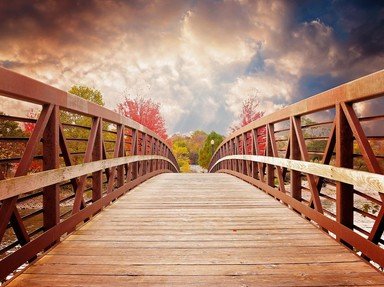Quiz Answer Key and Fun Facts
1. Let's begin our bridge crossings just upstream of the centre of London at Vauxhall Bridge. The second version was opened in 1906. No, that is not an Aston Martin parked outside the front but what is the (in)famous building (to the left of this picture) at the southern end of the bridge?
2. The next bridge downstream is Lambeth Bridge. This bridge and the nearby Westminster Bridge have distinctive colouring. What is the distinctly red colouring of this bridge meant to represent?
3. Along with Tower Bridge, Westminster Bridge (with the Houses of Parliament in the background) is arguably one of London's most photographed bridges. Which of the following landmarks is at the opposite (southern) end of this bridge?
4. Railway bridges are rarely as appealing as road/pedestrian bridges as you cannot usually walk across them, but here is an exception. Hungerford Bridge is a railway bridge but in 2002 (remember that date), new pedestrian walkways were built to flank the railway bridge. What was the name given to the "added-on" bridges?
5. Waterloo Bridge commemorates the victory of a British-led army at the Battle of Waterloo. The first bridge opened two years after this battle. True or false: Waterloo Bridge first opened in 1817.
6. Blackfriars Bridge was originally named "William Pitt Bridge" after Prime Minister William the Elder, but the bridge became known as Blackfriars Bridge because of the precinct dominated by Blackfriars Monastery, a Dominican priory. Yes or no?
7. The London Millennium Footbridge is a steel suspension bridge for pedestrians. What is the very famous building that can be seen at the northern end of the bridge?
8. The next bridge downstream, linking district of Southwark and the City (financial centre) has the lowest traffic utilisation of any bridge in central London. What is its name?
9. There have been several bridges called London Bridge on this site, dating back to Roman times. When was the current bridge, a steel and concrete box girder bridge, built?
10. Perhaps London's most iconic bridge, Tower Bridge is a combination suspension and bascule bridge. What is a bascule bridge?
Source: Author
1nn1
This quiz was reviewed by FunTrivia editor
stedman before going online.
Any errors found in FunTrivia content are routinely corrected through our feedback system.
